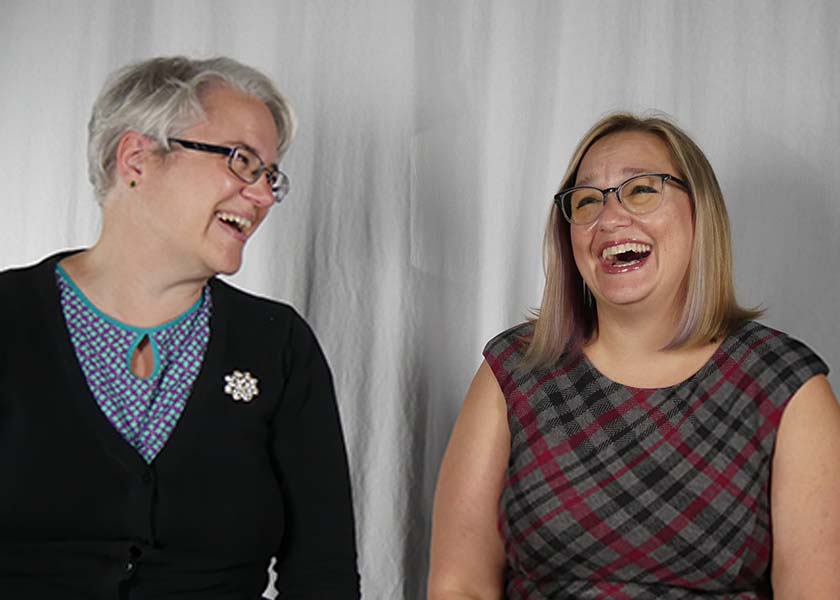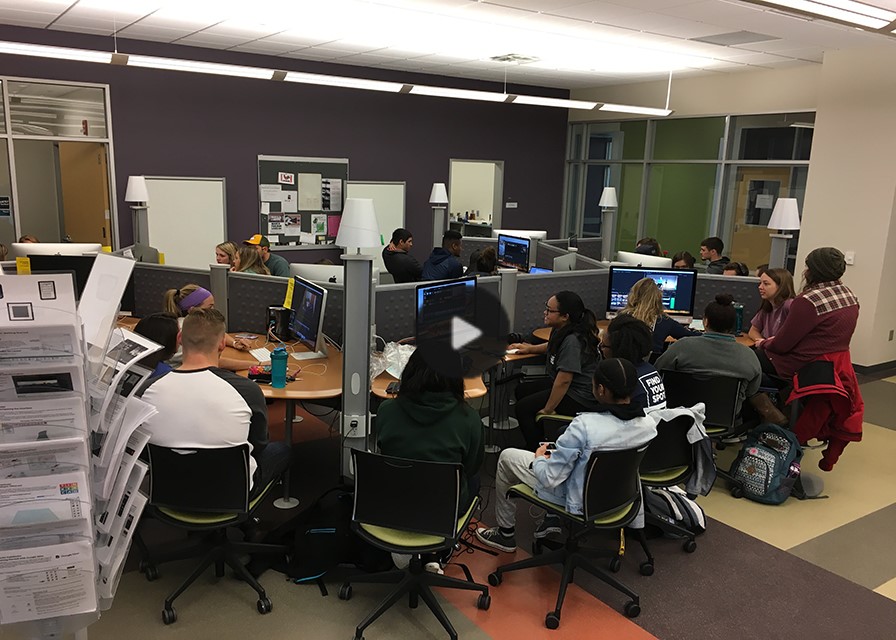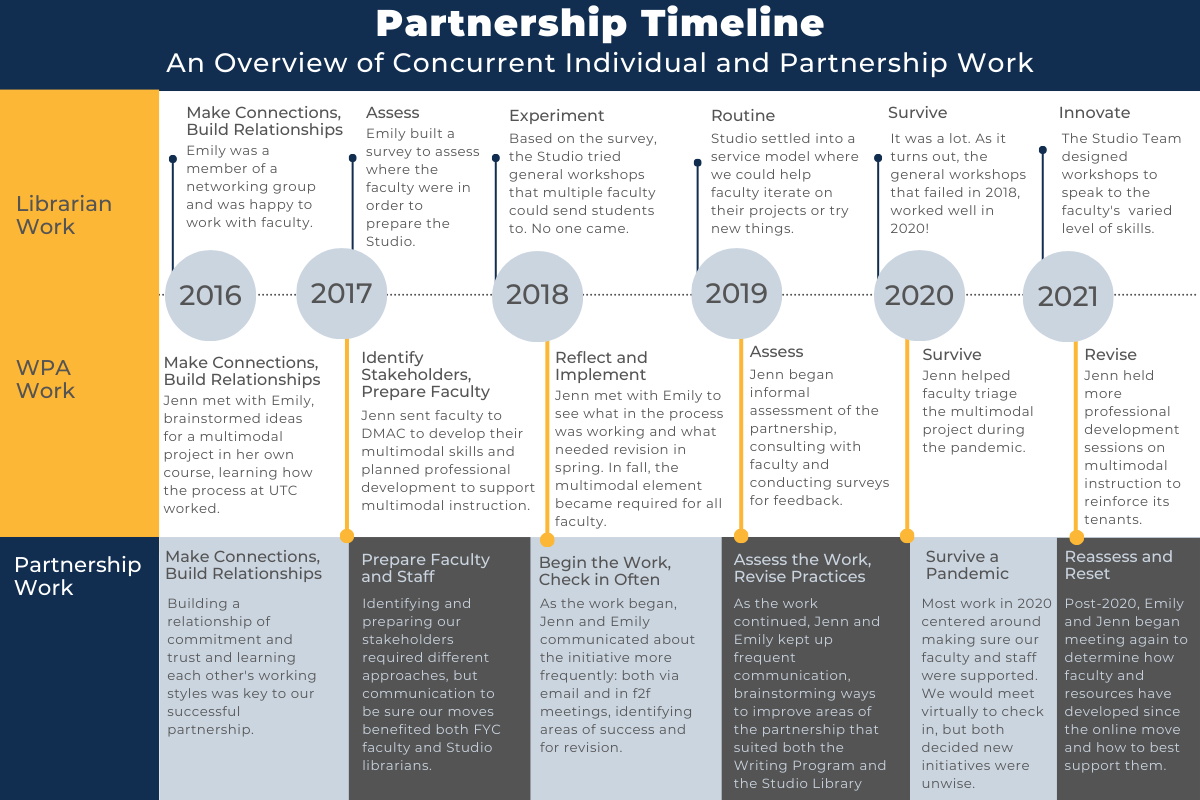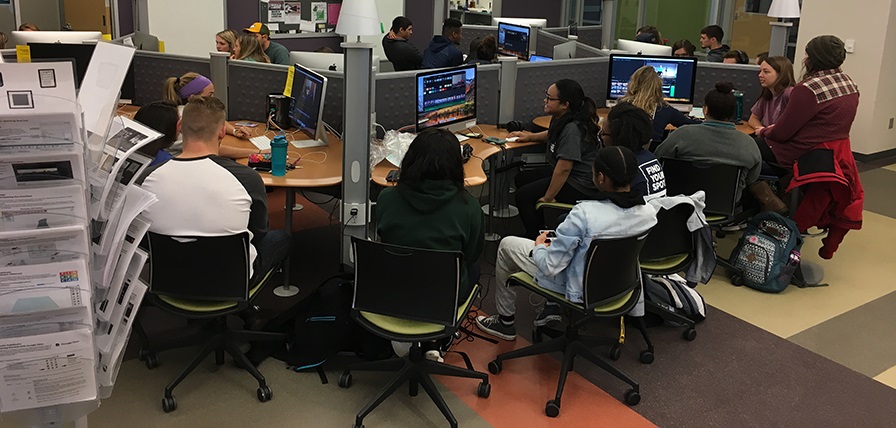"I was actually really excited because it's something different than writing a paper, and like, I like to write, but papers are just kind of tedious, you know? It's really fun to make a video and actually edit something and just show our work and our understanding of English through different forms of media." Isaac, UTC Freshman
This webtext describes how a partnership between a writing program and a library's studio developed into a functioning, successful collaboration that invigorates writing instruction and promotes unusual library resources (the Studio) where students can build a skillset in multimedia software. In this webtext, we detail the project development, its rationale and theoretical framing, its investigation, our findings, and our suggestions for those who would like to develop or pursue a similar partnership.

- Jenn:
-
I mean, really, this project began with an academic meet cute. At an awkward new faculty mixer/resource showcase in the first week of my first year as a Director of Composition, I met Emily and thought she was pretty boss. She told me she worked in the Studio and that she could help me and my students with all sorts of video, audio, and graphic work. She was warm and kind and gave off a my people vibe.
- Emily:
-
I always go into networking mode when meeting new faculty. The Studio provides a unique service, and it's helpful to get new faculty before their classes and assignments have settled. Jenn immediately struck me as the sort of professor who was open to new ideas and would be fun to work with, so she got the full spiel.
Partnerships
University writing programs and libraries have a history of collaboration. Students in required general education writing and research courses learn how to conduct academic research in the libraries they will call home for their remaining college years. The classic one-shot workshop is geared towards getting students familiar with the resources available to them and gives a face to the help libraries provide to their communities.
Multimodal composing is a natural space for partnerships between writing programs and libraries. Often the main technology concern that writing program administrators (WPAs) hear when incorporating new approaches in the program is rooted in the faculty member's discomfort teaching a technology they are not necessarily comfortable with themselves: "I don't know how to make a movie, so how am I supposed to get students to make one?" While a WPA can provide professional development sessions or consult with individual faculty, those WPAs with a larger faculty body may not have the time or resources to assist every new faculty member. Having the experts in the library offer individualized assistance to faculty strengthens the bonds between a writing program and the library in a way that is more substantial than the one-shot workshop.

Institutional Context
We recognize that our partnership is greatly influenced by our institutional context; specifically, we both have a good amount of autonomy to direct our programs. We develop and direct initiatives that we report on to our supervisors. We are providing a description of our programs here to offer that context to readers.
Partnership Timeline
An Overview of Concurrent Individual and Partnership Work
The concurrent work of the partnership added to the success of this endeavor. Both Director of Composition and Studio Director are jobs that require juggling many projects, initiatives, and tasks. The multimodal initiative is one of six initiatives that Jenn implemented from 2016–2021; for Jenn, this initiative represents less than 10 percent of her workload. For Emily, less than 10 percent of her workload was dedicated to this particular initiative, as she also runs a service point, teaches workshops, and does individual consultations.
With the limited amount of time required to foster the partnership, Emily and Jenn committed to meeting once or twice a term to plan how their individual work within the Writing Program and the Studio would progress, and how each director's moves both met the needs of their individual organizations and furthered the multimodal initiative. Each administrator focused on the needs of her own faculty and worked to communicate those needs in the partnership during their meetings.
The timeline below shows how the individual and concurrent work of the Writing Program and Studio Library developed over six years.

